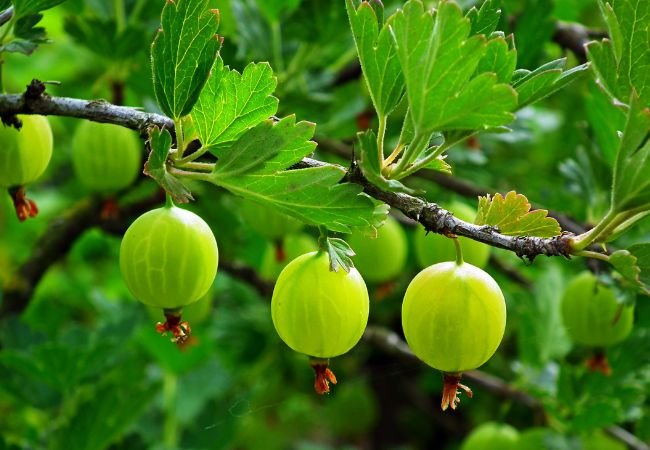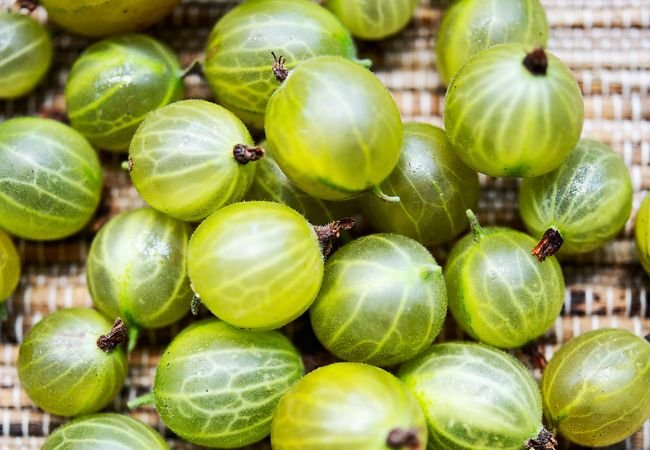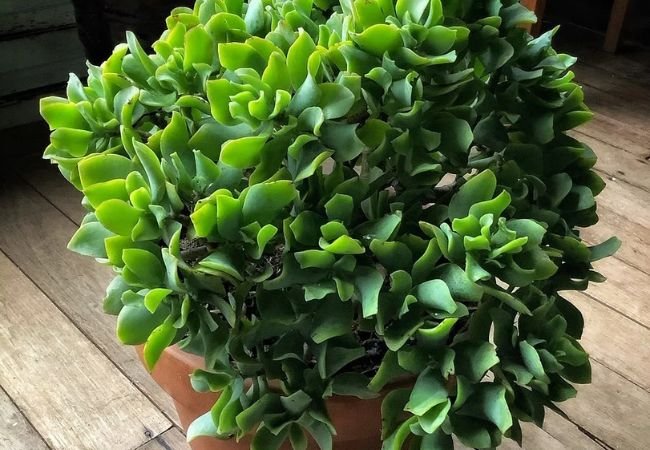A complete beginner’s guide to growing delicious, nutritious Gooseberries! Learn how to choose varieties, plant, care for and harvest gooseberry bushes successfully.
Are you thinking about growing gooseberries in your garden? Gooseberries are tangy and flavorful berries that make delicious jams, pies and other treats. They are also packed with nutrients like vitamin C. While gooseberries can be a little tricky to grow, this guide will teach you everything you need to know.
Here’s a short information chart about gooseberries:
| Attribute | Information |
|---|---|
| Botanical Name | Ribes uva-crispa |
| Common Name | Gooseberries |
| Plant Type | Deciduous shrub |
| Zones | 3-8 |
| Sun Exposure | Full sun to partial shade |
| Soil Type | Well-drained, loamy soil |
| Watering | Regular watering, soil should be kept moist but not waterlogged |
| Growth Habit | Upright, spreading |
| Height/Spread | Height: 3-5 feet, Spread: 3-6 feet |
| Special Features | Edible berries, tart flavor, high in vitamin C |
About Gooseberry Plants

Gooseberry plants are bushes that can grow 3-6 feet tall and wide. Their branches are covered in thorns, so be careful when pruning or harvesting. The leaves are green and lobed. In early spring, the plants produce small green flowers. As summer arrives, these flowers develop into the gooseberries.
Gooseberries come in green, red, purple and yellow varieties. Green gooseberries have a nice tart flavor when ripe. Other colored varieties tend to be a little sweeter. The berries ripen in late spring through early summer depending on your climate.
Choosing Gooseberry Varieties
There are many gooseberry cultivars to pick from. For warmer climates in the US, mildew-resistant varieties like Captivator, Hinnonmaki Red and Tixia are good choices. In cooler northern areas, try hardy options like Pixwell, Poor Man and Welcome.
Some varieties like Captivator and Hinnonmaki Red are dessert types with bigger and sweeter fruits. Others like Pixwell and Tixia are classified as culinary gooseberries, having a more tart taste ideal for cooking and making jams.
Decide if you want plants that produce yearly or every other year. Varieties like Captivator are annual producers, while Hinnonmaki bears heavily every two years. Think about fruit size too – some cultivars have smaller berries than others.
Planting Gooseberries
Gooseberries need full sun exposure – at least 6 hours of direct sunlight per day. They’ll tolerate partial shade but may not produce as much fruit. The soil must be well-draining but hold moisture. Add compost or other organic matter before planting to enrich the soil.
Plant gooseberry bushes in late fall or early spring when they are dormant. Space them 4-6 feet apart, setting the roots a couple inches below the soil surface. Water thoroughly after planting.
In cold winter climates, plant gooseberries on the north or east side of your garden. This delays budding in spring, protecting them from late frosts. In hot summer regions, provide afternoon shade if possible.
Gooseberry Care
Watering is critical, especially when establishing new plants and during fruiting. Apply 1-2 inches of water weekly if it doesn’t rain enough. Soak the soil deeply around the roots.
Spread 2-4 inches of mulch like bark chips or straw around the plants, avoiding direct contact with stems. This helps retain moisture and prevents weeds.
Fertilize gooseberries each spring when new growth appears. Use a balanced fertilizer following product instructions. Avoid over-fertilizing which can reduce fruit production.
Prune gooseberry bushes yearly in late winter before budding. Remove any dead, diseased or overcrowded branches. Thin out interior stems to increase airflow. Cut side shoots back to 2-4 buds. This promotes bushier more productive growth.
Pests and Diseases
Watch for common pests like aphids, sawfly larvae and gooseberry fruitworms. Use insecticidal soap, neem oil or other approved products if infestations occur.
The biggest disease issue is powdery mildew, which appears as white fungal growth on leaves and berries. Stay on top of pruning to increase airflow. Apply fungicides containing sulfur or potassium bicarbonate if mildew strikes.
Other potential diseases include cane blight, anthracnose and leaf spot. Practice good sanitation by clearing away diseased plant debris. Rotate gooseberry locations yearly if possible.
Harvesting Gooseberries
Harvest gooseberries when they fully color up – green ones turn green-yellow, while other varieties deepen in red, purple or yellow hues. Ripe berries are firm but have a slight give when gently squeezed.
Use scissors, pruners or your hands to snip or pull berries from the bushes. Wear gloves and long sleeves to protect against thorns. Pick gooseberries in the cool morning hours if possible.
After harvesting, gooseberries can be refrigerated for 1-2 weeks. They also freeze very well for longer storage.
With proper planting and care, your gooseberry plants will produce bountiful fruit for many years! Let me know if you have any other questions.








Leave a Reply